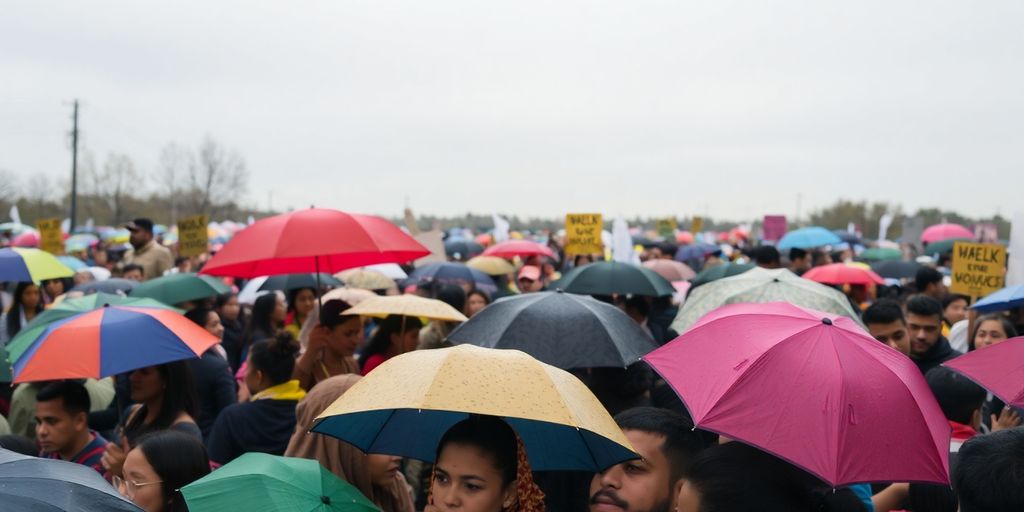Thousands of protesters braved heavy rain in Belgrade on May 23, 2025, to voice their opposition against the Serbian government’s crackdown on universities. This rally is part of a broader movement against corruption and demands for accountability following a tragic incident that claimed 16 lives last November.
Key Takeaways
- Thousands protested in Belgrade against government measures targeting universities.
- The protests were sparked by a tragic train station collapse linked to alleged government negligence.
- University autonomy is at risk due to proposed changes in education laws.
- The government has retaliated against protesting professors and students.
Background of the Protests
The protests began after a concrete canopy collapsed at a train station in Novi Sad, resulting in the deaths of 16 people. Many citizens attribute this tragedy to systemic corruption and negligence within the government. In response, university students and professors have led massive protests, demanding accountability and reform.
Government Response
The Serbian government, led by President Aleksandar Vucic, has accused the protesters of being influenced by foreign powers aiming to destabilize the country. Despite these claims, the protests have gained momentum, with students calling for early elections and greater respect for democratic freedoms.
Key Issues Raised by Protesters
Protesters have raised several critical issues, including:
- Revocation of Retaliatory Measures: Demands to reverse actions taken against university professors and deans who have supported the protests.
- Protection of University Autonomy: Concerns over proposed changes to education laws that would undermine the independence of state-run universities.
- Accountability for Corruption: Calls for transparency and accountability in the wake of the train station tragedy.
Support from the European Union
The protests have garnered international attention, with EU foreign policy chief Kaja Kallas expressing support for the students. Kallas emphasized the importance of respecting university autonomy and the need for constructive dialogue between the government and civil society.
The Future of Higher Education in Serbia
As the protests continue, the future of higher education in Serbia hangs in the balance. The government has threatened to cut salaries for protesting professors and defund faculties where classes have been suspended. This has led to fears that the government is willing to compromise the integrity of higher education to maintain power.
Conclusion
The ongoing protests in Serbia reflect a growing discontent with the government’s handling of corruption and its impact on education. As students and professors rally for their rights, the outcome of this struggle could significantly shape the future of democracy and higher education in the country.
Sources
- Thousands brave heavy rain to protest Serbia’s crackdown on universities, AP News.
- Thousands brave heavy rain to protest Serbia’s crackdown on universities | Ap, The Derrick.
- Commissioner Kos in Serbia for discussions on reforms and EU accession, Enlargement and Eastern Neighbourhood.
- Thousands brave heavy rain to protest Serbia’s crackdown on universities, ABC News.
- Serbia Approves New Government Led By Duro Macut, A Doctor, Radio Free Europe/Radio Liberty.






